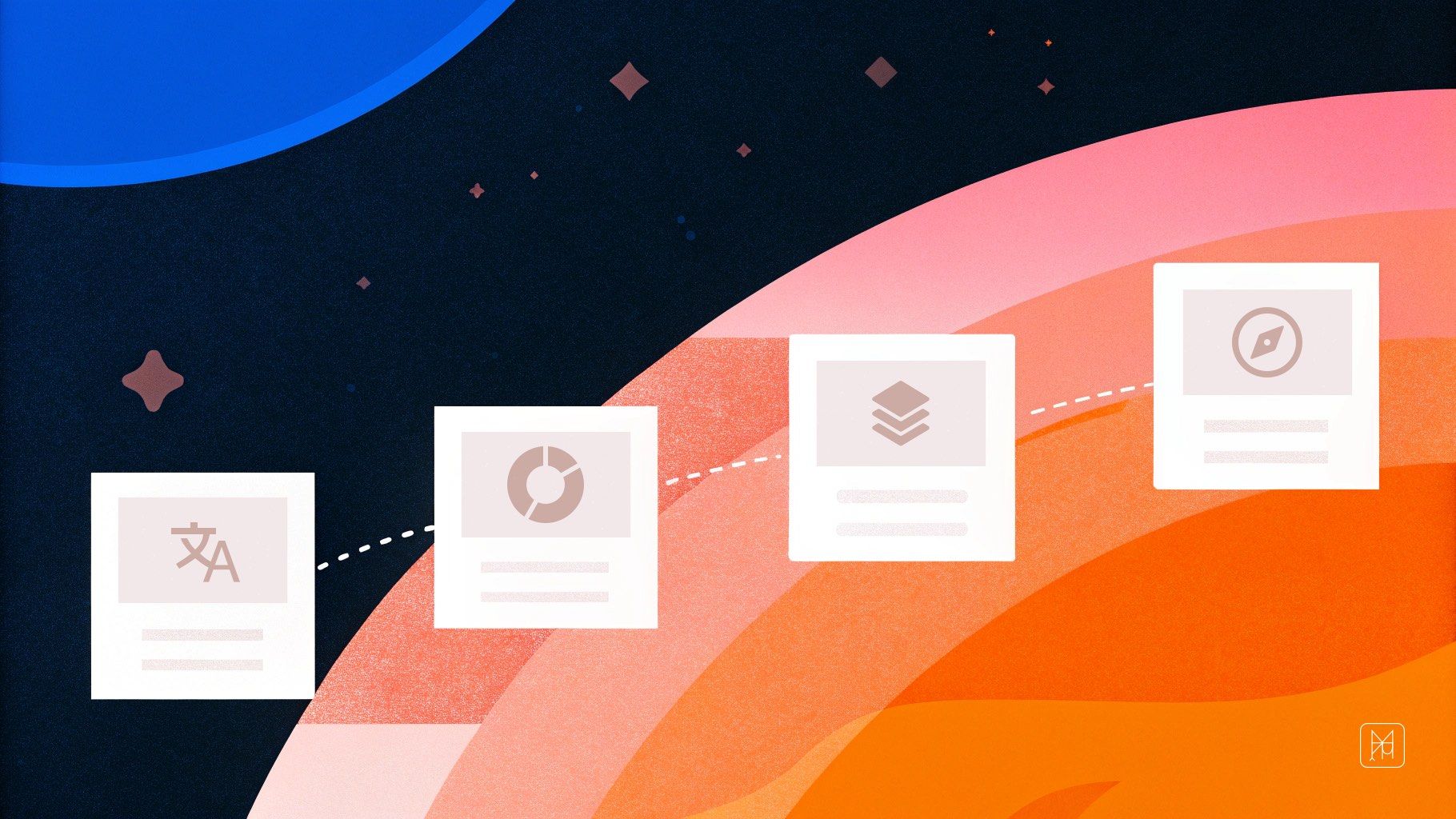How to Improve User Retention with Better Onboarding Flows


Let's talk about the elephant in the room: your users are leaving. Not because your product is bad, but because they never really got started in the first place.
I've seen it happen constantly across projects of all sizes. A team pours their heart into building something beautiful, launches it into the world, and then watches their retention numbers plummet like a stone in water. The culprit? A forgettable, confusing, or downright overwhelming onboarding experience.
Here's the truth: onboarding isn't just a nice-to-have feature. It's the make-or-break moment where users decide whether your product deserves a permanent spot in their digital life or gets relegated to the "tried once" graveyard. And as designers, we have the skills to transform that critical first impression into something that actually sticks.
Why Onboarding Matters More Than You Think
Think about the last time you downloaded a new app. Maybe you were excited, maybe you were skeptical. Either way, you had a specific problem you wanted to solve or a goal you wanted to achieve. What happened in those first few minutes determined everything.
Did the app make you feel smart and capable? Or did it make you feel lost and frustrated?
The companies that attract loyal users—the ones building wealthy user bases that keep coming back—understand something fundamental: people don't abandon products they understand. They abandon products that make them feel stupid or overwhelmed.
Your onboarding flow is essentially a bridge. On one side, you have a curious stranger who just clicked "Sign Up." On the other side, you have a confident user who knows exactly how to get value from what you've built. The quality of that bridge determines whether they make it across.
The Psychology Behind Sticky Onboarding
Before we dive into the tactical stuff, let's get aligned on what's actually happening in your user's brain during onboarding.
When someone first opens your product, they're in a uniquely receptive state. They've chosen to give you their time and attention—a precious resource. But this window of opportunity is incredibly narrow. Research shows you have roughly 3-7 minutes before decision fatigue sets in and they start wondering if this was worth it.
During this window, users are constantly evaluating three things:
Is this relevant to me? They need to see themselves in your product immediately. Generic, one-size-fits-all onboarding that treats everyone the same misses the opportunity to make users feel seen.
Can I actually do this? Nobody wants to feel incompetent. Your onboarding should make users feel progressively more capable, not progressively more confused.
Is this worth my time? Show value early and often. Don't make people complete ten steps before they understand why any of this matters.
Designing Onboarding Flows That Actually Work
Alright, let's get into the practical, creative side of building onboarding that improves retention.
Start With Motivation, Not Features
The biggest mistake I see in onboarding flows? Starting with a feature tour.
"Here's where you click this! And over here is that! And don't forget about this other thing!"
Stop. Nobody cares about your features yet. They care about their goals.
Instead of showing people what buttons to press, help them articulate what they want to achieve. Use personalization questions to understand their context. Are they a freelancer trying to attract more clients? A team lead managing multiple projects? A creative professional looking to streamline their workflow?
When you understand motivation first, you can tailor everything that follows to feel personally relevant. This simple shift in approach makes users feel like the product was built specifically for them—and that feeling is pure retention gold.
Progressive Disclosure Is Your Best Friend
You know that overwhelming feeling when someone dumps their entire life story on you in the first five minutes of meeting them? That's what happens when you try to teach everything at once.
Progressive disclosure means revealing information gradually, exactly when users need it. Show them the essentials first, then layer in advanced features as they become relevant.
Think of it like teaching someone to drive. You don't start by explaining how the transmission works. You start with "this pedal makes you go, this pedal makes you stop." The mechanical details can come later, once they're comfortable with the basics.
In your onboarding, this might mean:
- Showing core actions first (create, edit, share)
- Revealing shortcuts and power features contextually
- Using tooltips and in-app guidance that appears when relevant, not all at once
Make Quick Wins Inevitable
The fastest way to improve retention is to guarantee an early win. I'm talking about getting users to their first moment of value as quickly as humanly possible.
If you're building a design tool, don't make users start from a blank canvas. Give them templates. If you're building a productivity app, pre-populate it with example tasks they can immediately check off. If you're building anything that requires setup, do as much of that work for them as possible.
The goal is to make users think "Oh, I get it!" within their first session. That moment of clarity is what transforms casual browsers into committed users.
Use Empty States as Opportunities
Empty states—those moments when there's no content yet—are often treated as dead space. But they're actually golden opportunities to guide users toward their next action.
Instead of showing a blank screen that says "No projects yet," show a compelling empty state that says "Ready to create something amazing?" with a clear call-to-action and maybe a quick tip about what makes a great first project.
Every empty state in your onboarding should answer two questions:
- Why is this space empty?
- What should I do about it?
Build Confidence Through Micro-Commitments
People are more likely to complete a long journey if they can see progress along the way. This is why progress bars, checklists, and step indicators work so well in onboarding.
Break your onboarding into small, achievable steps. Each completion triggers a little dopamine hit that motivates users to keep going. You're not just teaching them how to use your product—you're building their confidence that they can master it.
And here's a pro tip: make the first step embarrassingly easy. The hardest part of any journey is starting. Once someone takes that first step, momentum carries them forward.
The Creative Details That Make Onboarding Memorable
Good onboarding gets users to value. Great onboarding does that while making users feel something.
Personality Matters
Your onboarding is often the first place users experience your brand's voice. Make it count. Are you playful? Professional? Supportive? Whatever your brand personality is, let it shine through in your microcopy, animations, and visual design.
I've worked on projects where simply changing the tone of onboarding copy from corporate-speak to friendly conversation improved completion rates by 30%. People want to feel like they're being welcomed by humans, not robots.
Animation as Communication
Subtle animations aren't just pretty—they're functional. They can:
- Draw attention to important elements
- Show relationships between actions and outcomes
- Make wait times feel shorter
- Celebrate completions and create positive associations
But keep it tasteful. Every animation should serve a purpose. If it doesn't improve understanding or delight, cut it.
Design for Scanning, Not Reading
Let's be honest: most people don't read onboarding text carefully. They scan. Design accordingly.
Use:
- Short sentences and paragraphs
- Bullet points for lists
- Visual hierarchy to emphasize key information
- Images and icons to convey meaning quickly
- Plenty of white space to prevent overwhelm
Your goal is to make the path forward obvious at a glance.
Common Onboarding Mistakes to Avoid
Let me save you some pain by highlighting traps I've seen teams fall into constantly:
Asking for too much too soon. Every field you add to your signup form increases friction. Only ask for information you absolutely need upfront. Everything else can wait.
Ignoring mobile. If a significant portion of your users are on mobile, your onboarding needs to be mobile-first. Desktop and mobile aren't the same experience scaled—they require different design approaches.
Forgetting to test with real users. You are not your user. What seems obvious to you (who lives and breathes this product) might be completely baffling to someone seeing it for the first time. Watch real people go through your onboarding. You'll learn more in five user tests than in fifty team meetings.
Making it mandatory. Not everyone needs or wants onboarding. Always provide a clear way to skip it. Power users will appreciate the respect for their time.
Setting it and forgetting it. Your onboarding should evolve as your product evolves. Review and refine it regularly based on data and feedback.
Measuring Onboarding Success
You can't improve what you don't measure. Here are the key metrics to track:
Completion rate: What percentage of users finish your onboarding? If it's below 70%, something's wrong.
Time to value: How long does it take users to achieve their first meaningful outcome? Shorter is better.
Feature adoption: Are users discovering and using key features? If not, your onboarding isn't doing its job.
Day 7/30 retention: The ultimate test. Are users coming back after they've finished onboarding?
Set up analytics to track these metrics, then constantly experiment with improvements. A/B test different approaches. Small changes can have outsized impacts.
Bringing It All Together
Improving user retention through better onboarding isn't about adding more steps or more instructions. It's about ruthlessly focusing on what matters: getting users to value as quickly and delightfully as possible.
The most successful products I've worked on share this trait: they make new users feel capable and confident within minutes. They don't just explain features—they help users achieve goals. They don't just process signups—they begin relationships.
As designers, we have the creative skills and strategic thinking to craft these experiences. We can attract users with great marketing, but we keep them with great onboarding. The two must work together, perfectly aligned toward a single goal: showing users why they made the right choice in trying your product.
Your onboarding flow is constantly being evaluated by new users. Each interaction either builds trust or erodes it. Each screen either moves them forward or creates friction. Make every moment count.
The wealth of loyalty, advocacy, and long-term user relationships you build starts with those first few minutes. Design them like everything depends on it—because it does.
Now go make your onboarding something worth remembering.